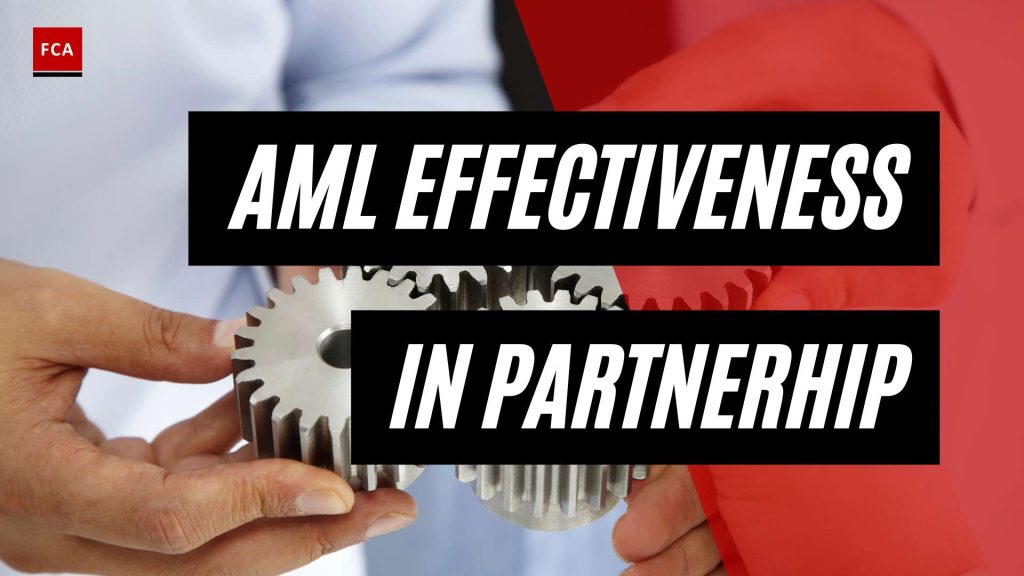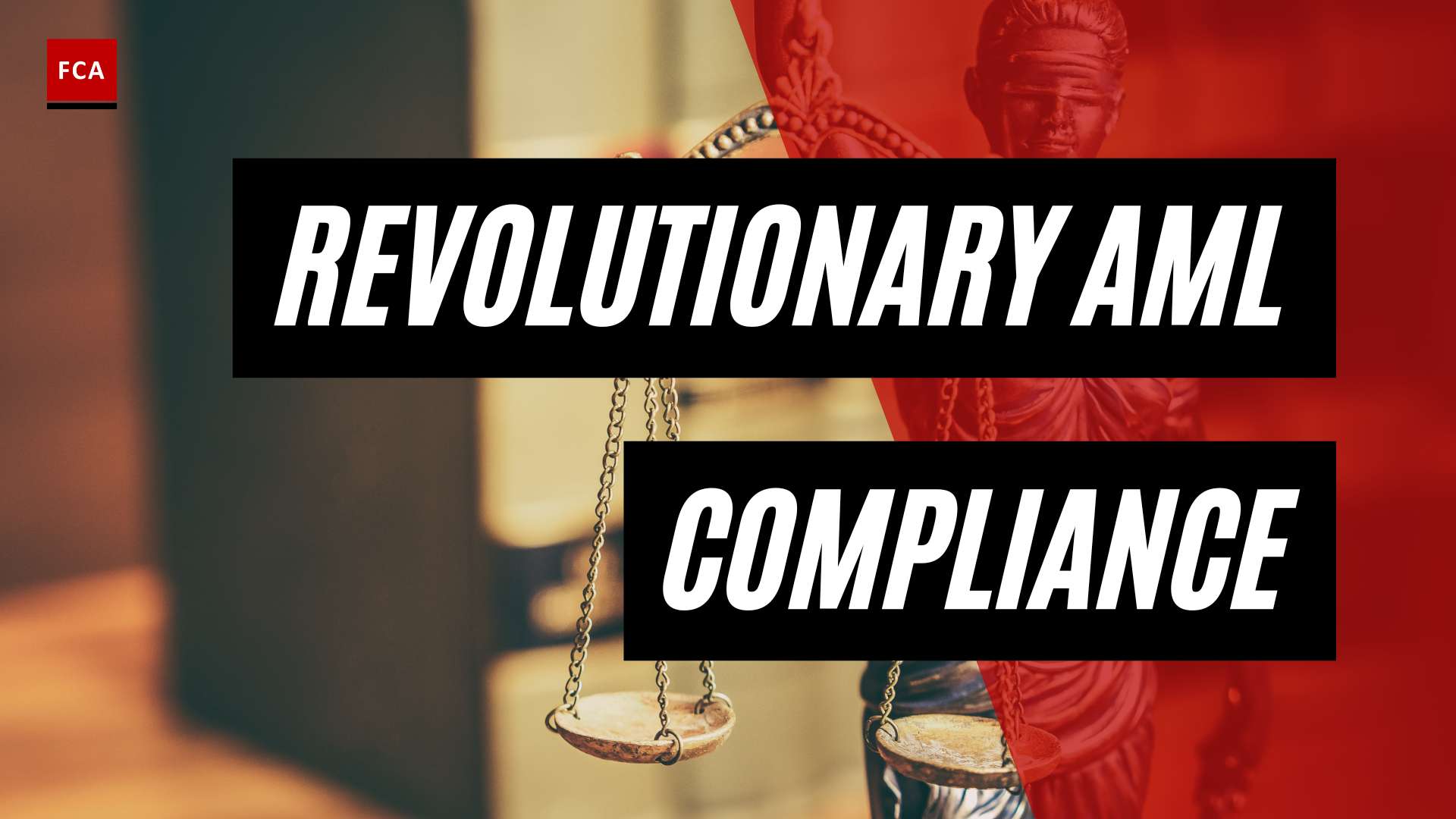Public-Private Partnerships in AML
Public-private partnerships (PPPs) play a crucial role in the fight against financial crime, including money laundering and terrorist financing. These partnerships bring together the expertise, resources, and capabilities of both public and private entities to enhance the effectiveness of anti-money laundering (AML) efforts.
Understanding Public-Private Partnerships
Public-private partnerships in the context of AML involve collaboration between government agencies, regulatory bodies, financial institutions, and other private sector entities. The integration of international regulations, such as those set by the Financial Action Task Force (FATF), and the establishment of supervisory bodies like the Anti-Money Laundering Authority in Europe, provide platforms for international cooperation in combating financial crime (Oliver Wyman).
The goal of public-private partnerships is to leverage the collective resources, technology, and expertise of both sectors to strengthen AML efforts. By working together, these partnerships enable the efficient detection of financial crime, reduce false positives, and allocate resources to areas at the highest risk for criminal activity. This collaboration leads to higher quality financial profiling, increased asset recovery, and more convictions in the fight against financial crime (Oliver Wyman).
Importance of Collaboration in AML Efforts
Collaboration between public and private stakeholders is crucial in combating financial crime effectively. Public agencies, regulators, and law enforcement agencies can benefit from the expertise, technology, and resources of the private sector. This collaboration allows for the translation of the increasing flow of information into tangible results, leading to improved financial profiling, enhanced asset recovery, and increased convictions (Oliver Wyman).
Public-private partnerships enable greater coordination between financial institutions, law enforcement agencies, and regulatory bodies. This holistic approach to combating financial crimes enhances overall effectiveness in AML efforts. Through shared intelligence, industry best practices, and technological solutions, entities can strengthen their AML programs and improve their ability to detect and prevent financial crime.
Clear communication, mutual trust, and a shared commitment to combating financial crimes are essential for effective public-private partnerships. These partnerships require ongoing collaboration and cooperation between stakeholders to achieve meaningful results in AML compliance and enforcement efforts (Alessa).
In the next sections, we will explore the benefits of public-private partnerships in AML, successful examples of such partnerships, challenges and considerations, and future recommendations to further enhance public-private cooperation in the fight against financial crime.
Benefits of Public-Private Partnerships
Public-private partnerships (PPPs) in anti-money laundering (AML) efforts offer several key benefits. These collaborations between public agencies, regulators, and private sector entities enhance the detection of financial crime and promote resource optimization and risk mitigation. By leveraging the strengths and expertise of both sectors, PPPs contribute to more effective AML practices.
Enhanced Detection of Financial Crime
PPPs enable financial institutions to identify more true positives and fewer false positives, leading to a more efficient detection of financial crime. Engagement and information sharing between public and private stakeholders facilitate the identification of suspicious activities, reducing false positives and directing resources to clients and transactions at the highest risk for criminal activity. This collaboration enables financial institutions to enhance their financial profiling, increase asset recovery, and support convictions in the fight against financial crime (Oliver Wyman).
Resource Optimization and Risk Mitigation
PPPs address challenges faced by individual entities in the financial sector, such as limited resources, expertise, and capabilities in AML compliance. By collaborating through PPPs, entities can benefit from shared intelligence, industry best practices, and technological solutions, optimizing their AML programs. This collaboration enables the public sector to leverage the resources, technology, and expertise of the private sector to combat money laundering, terrorist financing, and other financial crimes more effectively (Alessa). PPPs also foster greater coordination between financial institutions, law enforcement agencies, and regulatory bodies, allowing for a holistic approach to combating financial crimes and enhancing overall AML effectiveness.
By joining forces, public and private sector entities can achieve better outcomes in AML compliance and enforcement efforts. PPPs allow for shared intelligence, improved resource allocation, and a more comprehensive understanding of financial crime trends, leading to more efficient and effective AML practices. Clear communication, mutual trust, and a shared commitment to combatting financial crimes are essential for the success of PPPs in AML.
Public-private partnerships have been recognized as effective tools in combating money laundering and terrorist financing by international organizations such as the Financial Action Task Force. The involvement of private sector entities in PPPs ensures a better understanding of business practices, enabling the development of targeted and practical regulations that effectively deter money laundering and terrorist financing activities.
In the next section, we will explore successful examples of public-private partnerships in AML, including the initiatives by the Asian Development Bank and the Joint Money Laundering Intelligence Taskforce (JMLIT).
Successful Examples of Public-Private Partnerships
Public-private partnerships have demonstrated their effectiveness in combating money laundering and enhancing anti-money laundering (AML) efforts. Let’s explore two notable examples of successful public-private partnerships in the AML landscape.
The Asian Development Bank’s Initiatives
The Asian Development Bank (ADB), established in 1966, plays a crucial role in fostering public-private partnerships to combat financial crimes and promote compliance. With 68 member countries, including 49 from the region, the ADB has been at the forefront of facilitating collaboration between the public and private sectors in the fight against money laundering.
The ADB’s initiatives aim to strengthen the capacity of member countries to prevent and combat money laundering and illicit financial flows. Through partnerships with governments, financial institutions, and other stakeholders, the ADB facilitates knowledge sharing, capacity building, and the development of innovative solutions to address emerging AML challenges. By leveraging the expertise and resources of both the public and private sectors, the ADB’s initiatives have made significant contributions to the global AML landscape.
The Joint Money Laundering Intelligence Taskforce (JMLIT)
The Joint Money Laundering Intelligence Taskforce (JMLIT) in the United Kingdom is another exemplary public-private partnership that has yielded impressive results. Established in 2015, the JMLIT brings together law enforcement agencies, regulators, and financial institutions to collaborate in the fight against money laundering (White & Case).
The JMLIT has played a pivotal role in supporting and developing over 750 law enforcement investigations. Its collaborative approach has resulted in more than 210 arrests and the seizure or restraint of over £56 million. By sharing intelligence, expertise, and resources, the JMLIT has significantly enhanced the detection and prevention of money laundering activities in the United Kingdom.
These successful examples of public-private partnerships highlight the importance of collaboration and information sharing between the public and private sectors in the AML landscape. By leveraging the strengths and capabilities of each sector, public-private partnerships contribute to more robust and effective AML efforts. Continued support and investment in such collaborations are essential to staying ahead of evolving financial crime trends and protecting the integrity of the global financial system.
Challenges and Considerations
Implementing successful public-private partnerships in the realm of anti-money laundering (AML) and combating the financing of terrorism (CFT) comes with its own set of challenges and considerations. Two key areas that require careful attention are legal and data protection frameworks and the impact on de-risking practices.
Legal and Data Protection Frameworks
Public-private information sharing in AML/CFT efforts poses legal challenges, particularly in the areas of data protection and the rights of suspects in criminal proceedings. The sharing of personal data for AML/CFT purposes raises concerns regarding data protection laws. It is essential to strike a balance between effective information sharing and ensuring the privacy and security of individuals (source).
The flow of information between criminal investigations, financial intelligence units (FIUs), and obliged entities may also raise issues regarding the relationship between criminal procedure law and AML/CFT laws. Policymakers need to navigate these legal complexities when designing public-private information sharing mechanisms to ensure compliance with relevant laws and regulations.
Impact on De-Risking Practices
De-risking, the practice of financial institutions terminating or restricting relationships with clients deemed high-risk, is a significant concern in the context of public-private partnerships in AML. The sharing of information between public and private entities may inadvertently impact de-risking practices of obliged entities.
Financial institutions may become more cautious and opt for de-risking measures due to concerns surrounding potential exposure to regulatory risks. The potential consequences include limited access to financial services for individuals and businesses, particularly those operating in high-risk sectors or regions. Policymakers and stakeholders need to closely consider the unintended consequences of public-private partnerships on de-risking practices to strike a balance between effective AML measures and preserving access to financial services.
It is crucial for policymakers and stakeholders to address these challenges and considerations to ensure the successful implementation of public-private partnerships in AML efforts. By developing robust legal frameworks, protecting individuals’ data privacy, and mitigating the impact on de-risking practices, public-private partnerships can effectively enhance the fight against money laundering and terrorist financing.
For more information on the benefits, challenges, and recommendations related to public-private partnerships in AML, refer to our previous sections on benefits of public-private partnerships in AML and future outlook and recommendations.
Future Outlook and Recommendations
As the fight against money laundering and financial crime continues, the role of public-private partnerships (PPPs) in anti-money laundering (AML) efforts is set to become even more crucial. The future outlook for PPPs in AML is promising, with increasing recognition of their effectiveness in combating financial crime. To further strengthen these partnerships and improve AML practices, the following recommendations can be considered:
Strengthening Public-Private Cooperation
To enhance the effectiveness of PPPs in AML, it is essential to foster strong cooperation and collaboration between public and private stakeholders. This includes financial institutions, regulatory bodies, law enforcement agencies, and other relevant entities. Clear lines of communication, mutual trust, and a shared commitment to combatting financial crimes are key factors in the success of these partnerships. By working together, stakeholders can leverage each other’s resources, expertise, and technology to achieve more impactful outcomes in AML efforts.
To strengthen public-private cooperation, regular forums, working groups, and information-sharing platforms can be established. These platforms can facilitate the exchange of intelligence, best practices, and technological solutions that enhance the effectiveness of AML programs. Additionally, joint training programs and workshops can be organized to build awareness, knowledge, and skills among stakeholders. By fostering a collaborative environment, PPPs can create a more holistic approach to combating financial crimes and enhancing overall AML effectiveness (Alessa).
Improving AML/CFT Practices
Continuous improvement of AML and countering the financing of terrorism (CFT) practices is crucial in the fight against financial crime. Public and private stakeholders should work together to develop and implement effective AML/CFT frameworks and regulations. These frameworks should be regularly reviewed and updated to keep pace with evolving threats and risks.
To improve AML/CFT practices, it is important to focus on the following areas:
-
Risk-based approach: Encouraging the adoption of a risk-based approach to AML/CFT enables entities to allocate resources more effectively by prioritizing high-risk areas. This approach involves conducting risk assessments, implementing appropriate due diligence measures, and tailoring compliance efforts to address specific risks. By aligning efforts based on risk, stakeholders can optimize resource allocation and enhance the overall effectiveness of AML/CFT programs.
-
Technology and innovation: Embracing technological advancements and innovative solutions can significantly enhance AML/CFT practices. Stakeholders should explore the use of advanced analytics, artificial intelligence, machine learning, and data-sharing platforms to improve detection capabilities, automate processes, and enhance the efficiency of investigations. Leveraging technology can enable faster and more accurate identification of suspicious activities, supporting more effective AML/CFT outcomes.
-
Education and awareness: Promoting education and awareness within the public and private sectors is essential for strengthening AML/CFT practices. Training programs, workshops, and awareness campaigns can help stakeholders stay updated on evolving trends, regulatory changes, and emerging risks. By enhancing knowledge and understanding, stakeholders can better implement effective AML/CFT measures and contribute to the success of PPPs.
By implementing these recommendations, stakeholders can further enhance the effectiveness of PPPs in AML. Continued collaboration, improvement of AML/CFT practices, and embracing technology will contribute to more robust and efficient AML efforts, leading to the detection and prevention of financial crime. Public-private partnerships have the potential to revolutionize AML and play a pivotal role in safeguarding the integrity of the global financial system.
Exploring Straighteners for Curly Hair
Ceramic Straighteners
Tourmaline Straighteners
Titanium Straighteners
Content Brief:
- The target topic for the article is ‘Anti-Money Laundering > Emerging Trends > Public-Private Partnerships in AML’.
- The target audience for the article is ‘Professionals working in compliance, risk management, anti-money laundering, and anti-financial crime’.
- The target keyword for the article is ‘effectiveness of aml public-private partnerships’.
- The perspective for the article is ‘Third Person (he, she, it, they)’.
- The tone of voice for the article is ‘Neutral (clear, knowledgeable and confident)’.
- The article should be written in language ‘English (US)’.
- The reading level of the audience is ‘US Grade 8’.
- The article should include tables to display numerical data.
- The article must include internal links.
Directions:
- Respond in valid markdown, sparingly using tables and lists where relevant.
- Headers are denoted by
##and###, make sure to include all headers in the output. - If available, you should use the extra context for up to date information about the topic.
- You should cite information, facts and figures from the extra context.
- You should include inline markdown links for citations from the extra context.
- You should only write in the language specified, do not add any unnecessary English words.
- You should use synonyms for keywords to avoid repetition.
- You should include a table if you need to represent numerical data.
- You should add internal links within the text.
- You should add internal links as inline markdown links.
- Do not add any extra headers or sections.
- Do not use transition words or phrases.
- Do not include a conclusion.
Internal links:
- public-private partnerships in aml
- benefits of public-private partnerships in aml
- challenges of public-private partnerships in aml
- aml public-private collaboration
- public-private partnerships in anti-money laundering
- accountability in aml public-private partnerships
- industry collaboration in aml partnerships
- public-private information exchange in aml
- public-private cooperation in aml investigations
- public-private collaboration models in aml
Extra Context:
“`
- Public-private partnerships are set to play an even greater role in the effective detection of financial crime in the near future, enabling financial institutions to identify more true positives and fewer false positives, thereby directing resources to clients and transactions at the highest risk for criminal activity. (Oliver Wyman)
- Engagement and information sharing between public and private stakeholders facilitate the efficient detection of financial crime by financial institutions, reducing false positives and enabling the effective allocation of resources to high-risk areas, ultimately supporting higher quality financial profiling, increased asset recovery, and convictions. (Oliver Wyman)
- Public-private partnerships can help public agencies, regulators, and law enforcement translate the increasing flow of information into tangible results, leading to higher quality financial profiling, increased asset recovery, and more convictions in the fight against financial crime. (Oliver Wyman)
- Public-private partnerships (PPPs) can help address significant challenges in Anti-Money Laundering (AML) compliance, including limited resources, expertise, and capabilities within individual entities in the financial sector. (Alessa)
- The use of PPPs allows the public sector to leverage the resources, technology, and expertise of the private sector to combat money laundering, terrorist financing, and other financial crimes more effectively. (Alessa)
- By collaborating through PPPs, entities can benefit from shared intelligence, industry best practices, and technological solutions that enhance the effectiveness of their AML programs. (Alessa)
- PPPs enable greater coordination between financial institutions, law enforcement agencies, and regulatory bodies, leading to a more holistic approach to combating financial crimes and enhancing overall AML effectiveness. (Alessa)
- Public-private partnerships have been recognized as effective tools in combating money laundering and terrorist financing by various international organizations such as the Financial Action Task Force in their recommendations. (CFATF-GAFIC)
- The involvement of private sector entities in public-private partnerships ensures a better understanding of business practices, thus enabling more targeted regulations that are practical and effective in deterring money laundering and terrorist financing activities. (CFATF-GAFIC)
- Public-private partnerships enhance cooperation between key stakeholders, facilitate the sharing of information and resources, and improve the efficiency and effectiveness of AML/CFT efforts. (CFATF-GAFIC)
- Effective public-private partnerships in AML/CFT activities require clear legal frameworks, data protection regulations, and safeguards to address concerns regarding the exchange of sensitive information. (CFATF-GAFIC)








